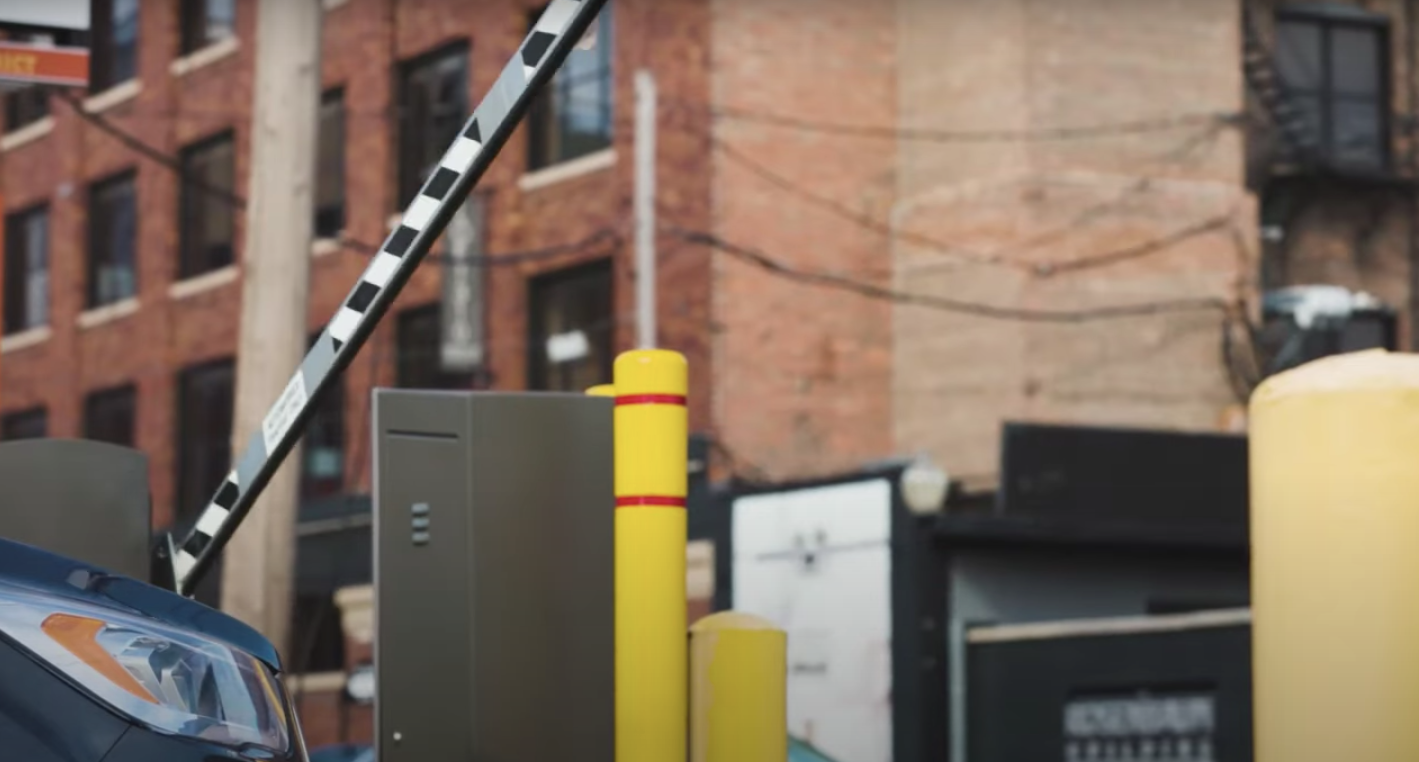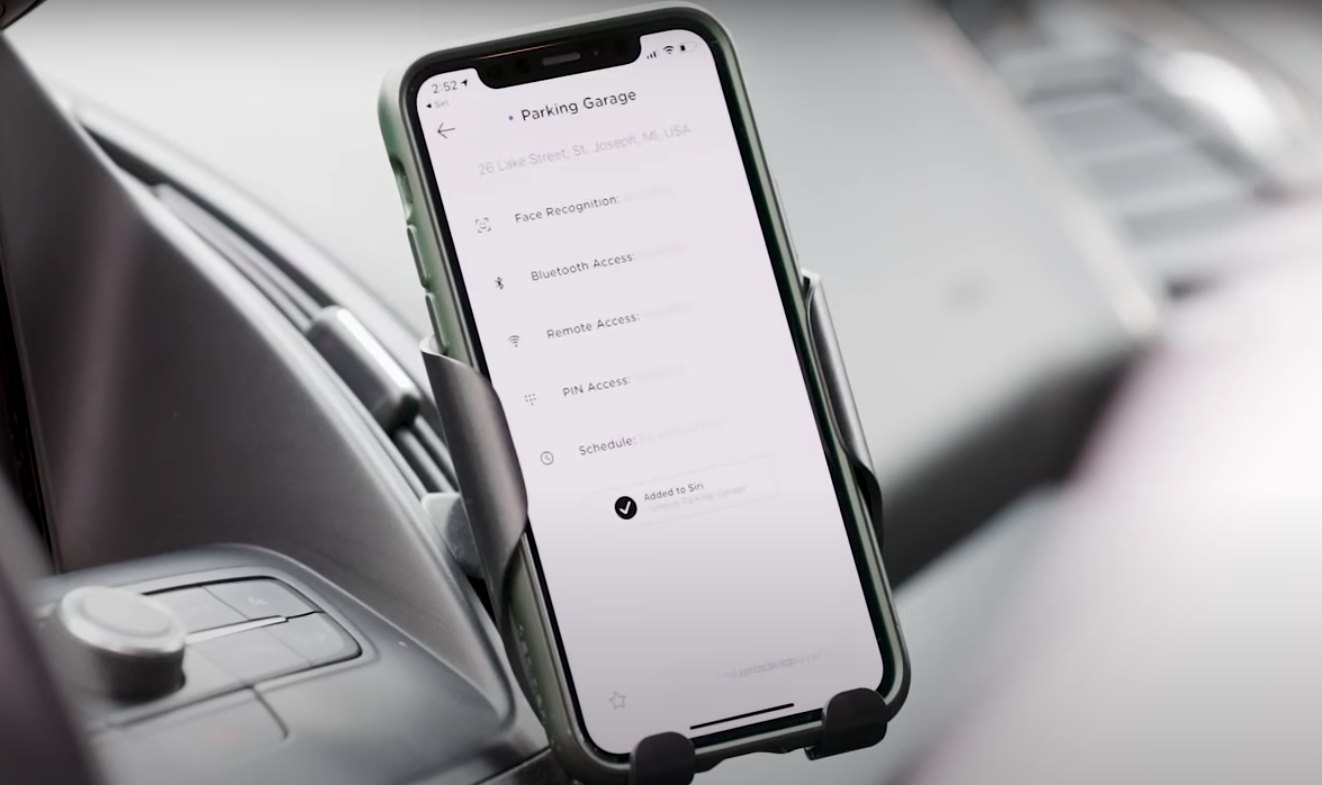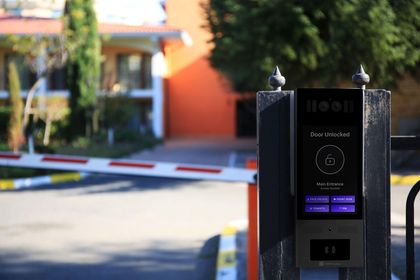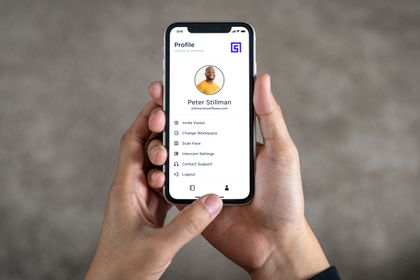Gate entry systems have come a long way, providing increased security and convenience for residential and commercial properties. One of the latest innovations in this field is the cell phone gate opener, a system that uses a smartphone app to control access to gates. In this comprehensive blog post, we will explore what cell phone gate openers are, how they work, and their benefits. We will also discuss other gate-opening methods available in the market, and provide top tips for purchasing and installing a gate-entry system.

Table of contents
- What are Cell Phone Gate Openers?
- Other Ways to Open Gates
- How Smartphone Gate Openers Work
- Benefits of Cell Phone Gate Openers
- 7 Tips for Purchasing and Installing a Gate Entry System
- Percentage Distribution of Gate Opening Methods
- Why Cell Phone Gate Openers are the Best Choice Now and in the Future
- How Swiftlane Works
Suggested Posts:
- Guide to Mobile Access Control
- The Evolution and Types of Apartment Entry Systems
- Car RFID Tags: Revolutionizing Vehicle Access Control & Security
- Buyer’s Guide – Upgrading your Gated Entry Access Control and Intercom
- Gated Entry Systems – Tips to Reduce Costs, Improve Safety and Convenience
What are Cell Phone Gate Openers?
Cell phone gate openers are access control systems that allow users to open a gate with phone devices. These systems typically involve installing an app on the user’s smartphone, which communicates with a compatible gate controller. This technology has gained popularity due to its convenience, security, and ease of use.
Other Ways to Open Gates
Aside from cell phone gate openers, there are several other methods available for opening gates. These include:
- Remote Controls
Traditional remote controls use radio frequency (RF) signals to communicate with the gate controller, allowing users to open and close gates with the push of a button. Although convenient, these systems can be limited by signal range and require users to carry a separate remote control. - Keypad Entry
Keypad entry systems involve the use of a numeric keypad installed at the gate, where users enter a pre-defined code to gain access. These systems offer moderate security but can be compromised if the access code is shared or discovered by unauthorized individuals. - Key Cards and Fobs
Key cards and fobs utilize radio-frequency identification (RFID) technology to authenticate users and grant access. These systems are commonly used in commercial buildings and gated communities. However, they require users to carry a physical card or fob, which can be lost or stolen. - Biometric Access
Biometric systems use unique physical characteristics, such as fingerprints or facial recognition, to grant access. While offering a high level of security, these systems can be more expensive and require specialized hardware for installation.
How Smartphone Gate Openers Work
Smartphone gate openers leverage the power of mobile technology to provide a seamless and secure access control solution. Here’s a more detailed breakdown of how these systems work:
- App Installation
To use a smartphone gate opener, users first need to download a dedicated app on their mobile devices. These apps are generally available for both iOS and Android devices and can be found in the respective app stores. Once installed, users need to create an account and register their devices with the access control system. - Configuration
The smartphone gate opener system needs to be properly configured with the gate controller. This configuration process typically involves installing a Bluetooth or Wi-Fi enabled module or device on the existing gate controller. This device then establishes communication between the gate controller and the user’s smartphone, allowing the smartphone to send commands to the gate. - Authorization
Once the smartphone is registered and the system is configured, the property manager or administrator can grant users access permissions. They can assign specific access levels, define time schedules, and set up temporary access codes for guests or service providers. - Access Request
When a user approaches the gate, they can use the smartphone app to send a command to open the gate. Depending on the system, this can be done by simply tapping a button within the app or by utilizing a hands-free method such as waving the smartphone in front of a reader. Some systems may also support geofencing, which allows the gate to automatically open when the user’s smartphone is within a predefined proximity of the gate. - Communication and Verification
When the access request is initiated, the smartphone sends a secure, encrypted signal to the gate controller. This signal contains the user’s unique identifier, which is then checked against the list of authorized users stored in the system. If the user has the appropriate permissions, the gate controller sends a command to the gate mechanism to open. - Monitoring and Logging
Smartphone gate opener systems often come with advanced monitoring and logging features. This allows property managers and administrators to track entry and exit events in real-time, view access history, and receive notifications of any unauthorized access attempts. This information can be invaluable for maintaining security and ensuring proper access control within the property.

By combining the convenience of smartphone technology with the security of access control systems, smartphone gate openers offer a modern and efficient solution for managing gate access.
Benefits of Cell Phone Gate Openers
Gone are the days when you had to carry a physical clicker or fob to gain access to your gated community or building. With the advancement of technology, cell phone based gate access has become the new norm. This method of access not only provides enhanced security, but it also offers unmatched convenience. Here’s a more detailed look at the benefits of using cell phone gate opener:
- Convenience
One of the main attractions of cell phone gate openers is the convenience they offer. Users always have their smartphones with them, eliminating the need to carry around additional access cards, fobs, or keys. Accessing the gate is as simple as opening an app or waving the phone in front of a reader, making entry and exit quick and hassle-free. - Enhanced Security
Traditional access control methods like key cards or fobs can be easily lost, stolen, or copied, posing a significant security risk. Cell phone gate openers utilize encrypted communication and unique digital identifiers, making it much more difficult for unauthorized individuals to gain access. Additionally, property managers can revoke access permissions remotely and instantly, providing greater control over security. - Remote Access Management
Cell phone gate openers allow property managers and administrators to manage access permissions from anywhere using their smartphones or web-based interfaces. They can grant or revoke access, set up time-based restrictions, and issue temporary access codes for guests or service providers, all without needing to be physically present at the property. - User Accountability
Smartphone gate openers enable detailed access monitoring and logging. Property managers can track entry and exit events in real-time, see who accessed the property, and when. This increased visibility and accountability can help maintain security and deter unauthorized access attempts. - Scalability and Flexibility
Cell phone gate openers can be easily integrated into existing access control systems and are highly scalable. As the property grows or the number of users increases, the system can be easily expanded without significant infrastructure changes. This flexibility makes it an ideal solution for both small residential properties and large commercial complexes. - Cost Savings
By utilizing smartphones as access credentials, cell phone gate openers can help property owners save on the costs associated with issuing and replacing physical access cards or fobs. Additionally, many smartphone gate opener systems offer cloud-based management, reducing the need for expensive on-site servers and hardware. - Customization and Integration
Cell phone gate openers often support integration with other security and building management systems, such as video surveillance, alarm systems, video intercom system and HVAC controls. This allows property managers to create a comprehensive and unified security solution tailored to their specific needs.
By offering enhanced convenience, security, and flexibility, cell phone gate openers are quickly becoming the preferred access control solution for modern properties. Their numerous benefits make them a worthwhile investment for any property looking to improve its access control and overall security.
7 Tips for Purchasing and Installing a Gate Entry System
When choosing a gate entry system for your property, consider the following tips to ensure you make the best decision:
- Evaluate Your Needs: Consider the specific requirements of your property, such as the level of security needed, the number of users, and any special access requirements.
- Choose the Right Technology: Based on your needs, determine which gate opening method (cell phone, remote control, keypad, etc.) best suits your property.
- Compatibility: Ensure that the gate opener you choose is compatible with your existing gate hardware and controller.
- Ease of Installation: Look for a system that is easy to install and doesn’t require extensive rewiring or modifications to your existing gate.
- User Experience: Consider the ease of use and convenience for users, as well as the quality of the smartphone app (if applicable).
- Budget: Determine your budget and find a gate opener that offers the best value for your investment.
- Support and Warranty: Check for a reliable manufacturer with good customer support and a solid warranty.
Percentage Distribution of Gate Opening Methods
As technology continues to evolve, the popularity of various gate opening methods has shifted. Here’s an estimated percentage distribution of gate opening methods:
- Remote Controls: 30%
- Keypad Entry: 20%
- Key Cards and Fobs: 25%
- Biometric Access: 5%
- Cell Phone Gate Openers: 20%
While remote controls and key cards still hold a significant share of the market, cell phone gate openers are quickly gaining popularity due to their convenience, security, and ease of use.
Why Cell Phone Gate Openers are the Best Choice Now and in the Future
As we’ve discussed, cell phone gate openers offer numerous benefits compared to traditional gate opening methods. Their convenience, security, and remote access capabilities make them an increasingly attractive option for property owners.
As smartphone usage continues to rise and more people rely on their devices for everyday tasks, it’s only natural for gate access control systems to follow suit. With advancements in technology and the widespread adoption of smartphones, we can expect cell phone gate openers to become the preferred method for gate access control in the coming years.
In conclusion, cell phone gate openers provide a modern, secure, and convenient solution for gate access control. As the world becomes increasingly connected and reliant on smartphones, these systems are poised to become the standard in gate entry systems. By choosing a cell phone gate opener for your property, you’ll be investing in a technology that is not only practical and user-friendly but also future-proof.
How Swiftlane Works
One of the major benefits of Swiftlane gate access is the ability to grant or deny access from anywhere. Property managers or homeowners can grant temporary access to guests or contractors, without having to be physically present. This eliminates the need for manual intervention and saves time. This is also extremely useful, especially when residents forget to create a visitor pass or they live in a large community, and opening the gate for a visitor manually every time can become burdensome.
Additionally, cell phone based gate access control system integrates seamlessly with other building access control systems, such as fob readers, video intercom system, and door access. This integration creates a unified system that can be managed from one central location, reducing maintenance costs and creating a better overall experience.
Finally, many cloud-based systems, such as Swiftlane, can be managed remotely and serviced remotely, speeding up service calls and reducing maintenance costs.
Conclusion
In conclusion, cell phone gate openers have revolutionized access control systems, offering numerous benefits that make them the top choice for modern properties. The unparalleled convenience, enhanced security, remote access management, user accountability, scalability, flexibility, cost savings, and customization possibilities make them a highly attractive solution for both residential and commercial settings.
As smartphone usage continues to grow and technology advances, cell phone gate openers are expected to become the preferred method for gate access control. By investing in this technology, property owners and managers can future-proof their access control systems and ensure a seamless, user-friendly experience for all authorized individuals.
By understanding the benefits and best practices for implementing cell phone gate openers, property owners can make informed decisions when selecting a gate entry system. With the right solution in place, they can enjoy increased security, convenience, and ease of management, ensuring a safe and accessible environment for residents, employees, and guests alike.
Get a Quote from Swiftlane for A Gated Entry System
Reach out to Swiftlane for a free consultation or quote for upgrading your gated entry system








